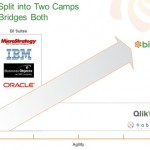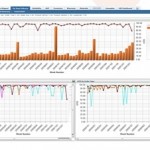As published in Business2Community
Understanding Consumer Search Behavior
 If you are looking to rank well in the search engine results (SERPs) it’s important to understand how and why people search in the first place. Knowing this will allow you to create content tailored for your target consumer search queries. Fortunately, lots of experts have studied this as part of understanding consumer behavior.
If you are looking to rank well in the search engine results (SERPs) it’s important to understand how and why people search in the first place. Knowing this will allow you to create content tailored for your target consumer search queries. Fortunately, lots of experts have studied this as part of understanding consumer behavior.
Search Types
Nearly all types of internet searches fit into one of the following three categories:
1. Informational – Informational searchers are simply looking for information. Be it a definition, product name or review, recipe, or “how to” instructions.
Examples are:
“How to trim cat claws”
“Men’s shoe types”
“Sprinkler reviews”
Your web pages for this type of search need to provide useful, informative content. Things like tip guides, checklists, e-books, and white papers go here.
 2. Navigational – A navigational browser is searching for an official website, person, or company.
2. Navigational – A navigational browser is searching for an official website, person, or company.
Content on these pages speak to people with a specific interest in your brand’s products and services. These are consumers looking for actionable ways to purchase or inquire. Call-to-actions should be on every page, but particularly on these types of pages. This is your search that needs to lead to some sort of action.
3. Transactional – Transactional searchers are seeking something in particular.
Examples are:
“Buy Nike track shoes”
“Frying pans for sale”
People coming to these pages are ready to purchase your product or service. Optimize these pages for specific product and category terms, and have clear calls-to-action with links.
Each type of visitor should be offered different web content according to their individual needs. Understanding this will guide you in creating the right content for the right search, delivering a better customer experience, and good SEO.



